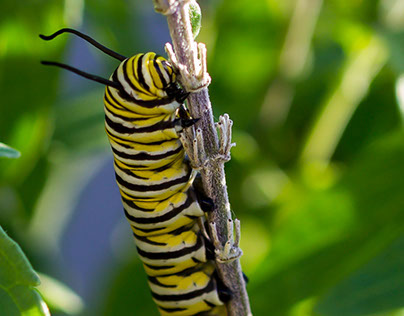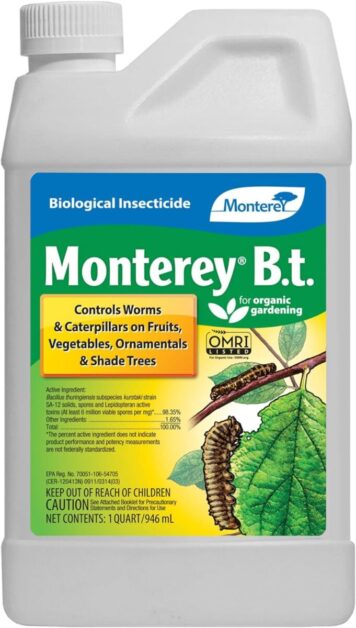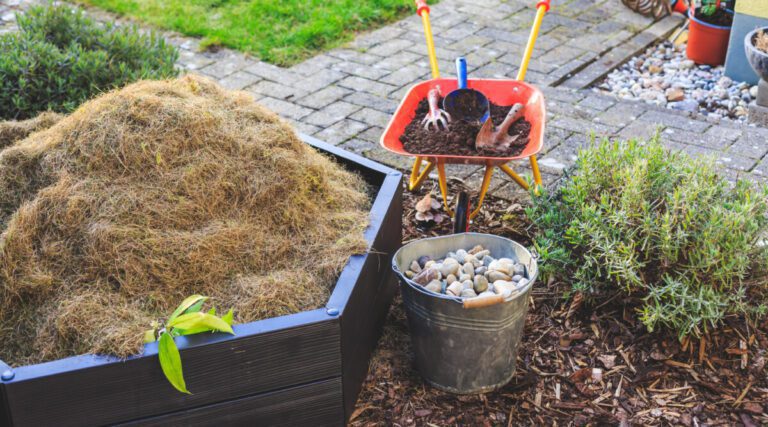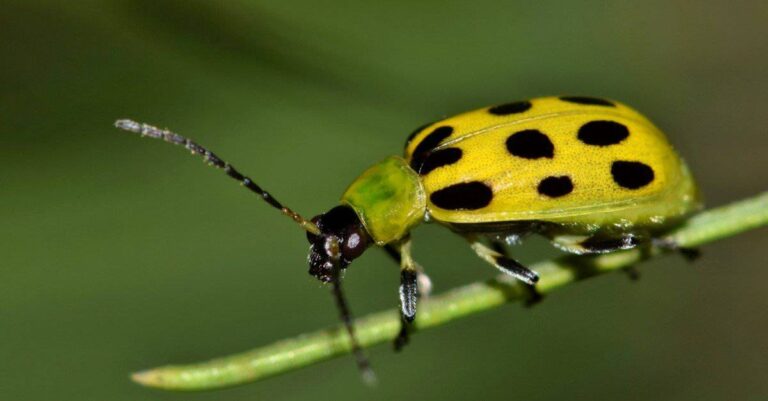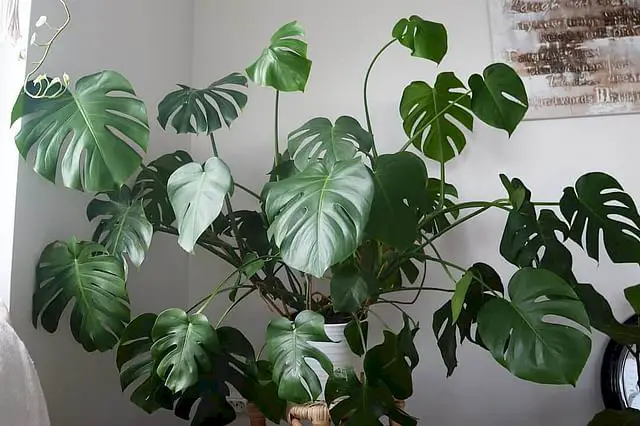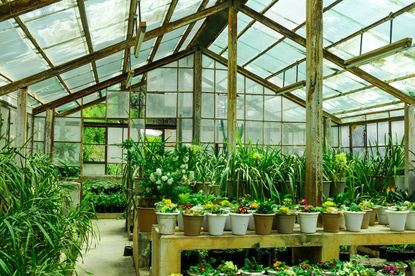Get Rid of Caterpillars on Lavender: Effective Methods to Control and Prevent These Pests from Your Lavender Plants
Did you know that a single caterpillar can munch through a lavender plant in no time, leaving your garden looking like a battlefield? If you’re struggling to keep these pesky pests at bay, you’re not alone. Caterpillars are notorious for feasting on lavender, causing damage that can hinder the growth and beauty of your plants. Luckily, there are effective methods to control and prevent caterpillar infestations, ensuring your lavender thrives. In this guide, we’ll explore the best strategies to protect your lavender from these unwelcome visitors. Say goodbye to caterpillars and hello to healthy, vibrant lavender plants with these expert tips!
Table of Contents
Methods to Identify Caterpillar Infestation on Lavender Plants
Caterpillar infestations can have a detrimental impact on lavender plants, affecting their overall health and productivity. Identifying these infestations early is crucial in order to prevent further damage and effectively address the issue. There are several methods that can be employed to identify caterpillar infestations on lavender plants.
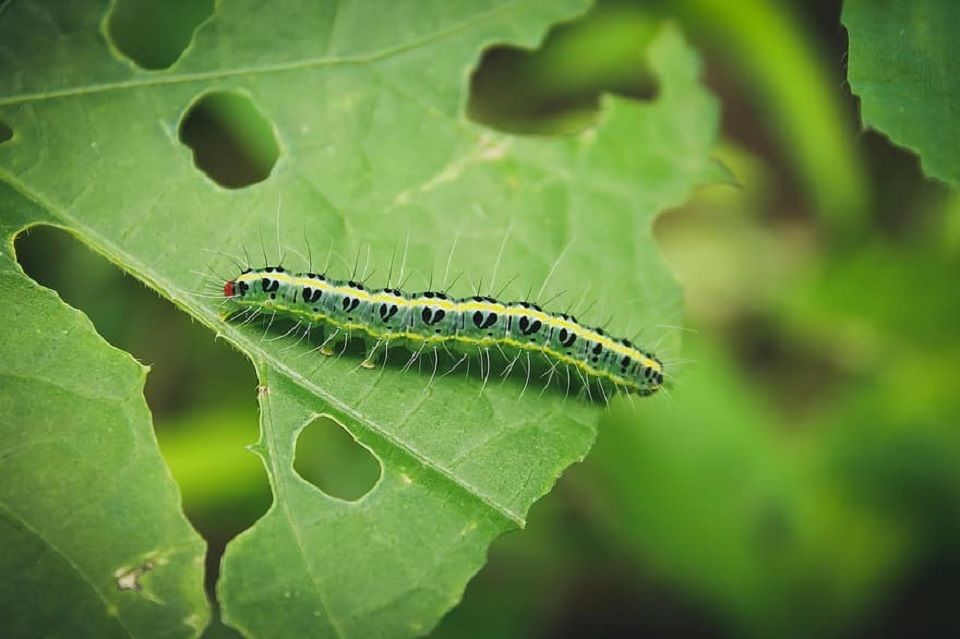
- Visual Inspection:
- Leaves, Stems, and Flowers: Examine these plant parts closely.
- Look for ragged edges on leaves, holes, or missing foliage. These are signs of feeding damage.
- Check for any discoloration or wilting.
- Frass (Caterpillar Waste):
- Caterpillars leave behind frass, which can appear as small black or green droppings on the plants.
- Look for these waste deposits near the affected areas.
- Presence of Caterpillars:
- Keep an eye out for the caterpillars themselves.
- They can vary in size, color, and shape depending on the species.
- Leaves, Stems, and Flowers: Examine these plant parts closely.
Remember that early detection and intervention are essential to prevent severe damage to your lavender plants. 🌿🐛 .
Understanding the Life Cycle of Caterpillars and Their Impact on Lavender
Caterpillars are the larval stage of butterflies and moths, and their life cycle is a fascinating yet potentially destructive process. Understanding this cycle is crucial for effectively managing caterpillar infestation on lavender plants. The life cycle of caterpillars consists of four distinct stages: egg, larva, pupa, and adult.

- Lavender Growth Stages:
- Lavender is a slow-growing perennial that may bloom in its first year but takes three or more years to fully mature. The growth rate depends on the variety, with most varieties taking roughly three years to become fully mature plants.
- Propagation methods play a role in growth speed:
- Seed: Slowest but cheapest way to propagate lavender. Takes 2-3 months until transplant, 2 years until bloom, and 3-4 years until maturity.
- Cutting: Faster than seed. Takes 1-3 months until transplant, 1 year until bloom, and 3 years until maturity.
- 1 Quart Plant: Immediate transplant, blooms the same year, and matures in 2-3 years.
- 1 Gallon Plant: Immediate transplant, blooms the same year, and matures in 1-3 years.
- Water availability during the juvenile stage affects growth. Adequate moisture (without soggy soil) ensures a rapid start.
- Caterpillar Impact:
- After hatching from eggs, caterpillars emerge and primarily feed on plant material to grow. They molt several times during growth.
- Lavender caterpillars can cause severe damage:
- Aesthetic: Defoliation affects the plant’s appearance.
- Health: Continuous feeding weakens the plant, making it susceptible to diseases and pests.
- Flower Production: Severe infestations hinder flower production, impacting ornamental value and lavender-based products.
In summary, understanding the life cycle of both lavender plants and caterpillars is crucial for maintaining healthy lavender gardens.
The Importance of Early Detection and Prompt Action
Early detection and prompt action are critical when it comes to managing caterpillar infestations on lavender plants. These voracious pests can cause significant damage if left unchecked, resulting in stunted growth, decreased flowering, and even plant death. By diligently monitoring your lavender plants for signs of caterpillar activity and taking immediate steps to address the issue, you can effectively minimize the impact and protect the health of your plants.
Detecting caterpillars in their early stages allows for targeted intervention.
Smaller populations are easier to control, minimizing damage.
Prevents exponential growth of caterpillar numbers.
As caterpillars grow, their feeding intensifies, causing more harm to plants.
Early intervention prevents severe defoliation and preserves plant health.
Early action reduces reliance on harsh chemical pesticides.
Environmentally friendly methods (like manual removal) are more effective with smaller infestations.
Natural Predators: Encouraging Beneficial Insects in Your Garden
Encouraging beneficial insects in your garden is a natural and effective way to control caterpillar infestation on lavender plants. These insects are natural predators that feed on caterpillars, helping to keep their population in check. By providing the right environment and resources, you can attract these helpful insects to your garden and create a balanced ecosystem.
:max_bytes(150000):strip_icc()/GettyImages-562441145-576158e05f9b58f22eb27f93.jpg)
- Plant a diverse range of flowering plants: Ensure a year-round supply of nectar and pollen.
- Support beneficial insect populations: Sustain their populations by providing continuous food sources.
- Attract natural predators: Some effective predators include ladybugs, lacewings, and parasitic wasps.
- Understand predator behavior: These insects feed on caterpillars and lay their eggs on them, leading to the larvae consuming the caterpillar from within.
- Reduce caterpillar population: By supporting these beneficial insects, you can significantly control and decrease caterpillar infestations.
Physical Methods: Handpicking and Manual Removal of Caterpillars
Handpicking and manual removal of caterpillars is an effective physical method for controlling infestations on lavender plants. This method involves inspecting the plants regularly and carefully removing any caterpillars that are found. While it may seem labor-intensive, this hands-on approach can significantly reduce the population of caterpillars without the use of chemicals or pesticides.
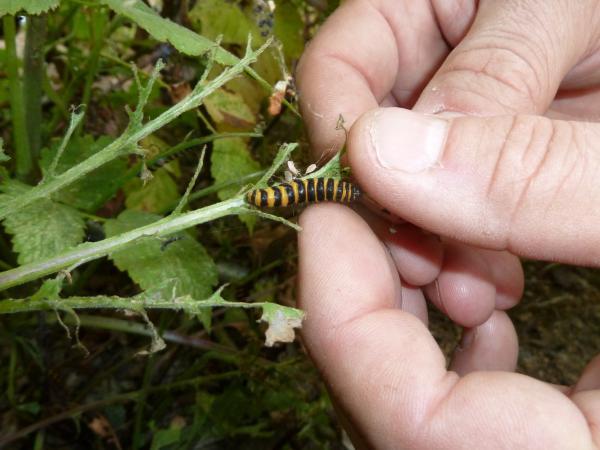
- Visual Inspection:
- Examine the foliage closely for signs of caterpillar activity.
- Look for chewed leaves, caterpillar droppings (frass), and any discoloration.
- Check the undersides of leaves and stem-leaf junctions where caterpillars often hide.
- Removal Method:
- When you spot a caterpillar, pluck it off the plant.
- Dispose of it in a bucket of soapy water or by crushing it.
- Regularly monitor the plants and promptly remove any caterpillars.
Remember, early intervention is crucial for maintaining healthy lavender plants! 🌿🐛🌱.
Creating a Protective Barrier: Using Netting or Row Covers
Creating a protective barrier using netting or row covers is an effective method for preventing caterpillar infestation on lavender plants. By physically blocking access to the plants, netting and row covers serve as a physical barrier that can significantly reduce the chances of caterpillars laying eggs or feeding on the foliage.
- Use netting and row covers: These create a protective shield around the plants.
- Prevent egg-laying: Properly installed netting and row covers prevent adult butterflies from laying eggs on the plants.
- Block access to adult butterflies: This minimizes the risk of caterpillar infestation.
- Ensure a secure fit: Make sure the netting or row covers fit tightly around the lavender plants to prevent caterpillars from finding gaps or openings.
- Conduct regular inspections: Check for signs of wear and tear and make necessary repairs to maintain their effectiveness.
- Incorporate into pest management: Use netting or row covers as part of your overall strategy to safeguard your lavender plants from caterpillar infestations.
I used this plant protection netting for my garden and it worked wonders. It effectively shielded my vegetables and flowers from pests and harsh weather conditions. The netting was easy to install and durable, providing long-lasting protection throughout the growing season. However, it’s important to secure it properly to prevent any gaps where pests could enter. Overall, it’s a reliable solution for safeguarding your plants.
- Effective protection: The netting provides excellent protection for vegetables, flowers, and other plants against pests, birds, and harsh weather conditions.
- Versatile use: Suitable for use in gardens, greenhouses, and outdoor plant beds, offering versatility in protecting various types of crops.
- Easy installation: The row covers are easy to install and can be securely anchored to the ground or plant containers, ensuring hassle-free application.
- Breathable material: Made from breathable fabric, the netting allows air, water, and sunlight to penetrate while still providing protection, promoting healthy plant growth.
- Durable construction: Constructed from durable materials, the netting offers long-lasting use and withstands outdoor elements, providing reliable protection season after season.
- Size limitations: The available size options may not suit larger garden beds or plants, limiting their effectiveness in covering larger areas or tall plants.
- Limited aesthetics: While functional, the netting may not enhance the visual appeal of the garden or landscape due to its utilitarian design.
- Potential tangling: The netting material may occasionally tangle or snag, requiring careful handling during installation and maintenance to prevent damage.
- Not suitable for all pests: While effective against many common garden pests, some smaller insects may still be able to penetrate the netting, necessitating additional pest control measures.
- Price considerations: Depending on the size and quantity needed, the cost of purchasing multiple row covers may add up, potentially impacting the overall budget for gardening supplies.
Utilizing Homemade Remedies: DIY Sprays and Solutions
Homemade remedies can be an effective and natural way to combat caterpillar infestation on lavender plants. DIY sprays and solutions can not only be cost-effective but also provide peace of mind for gardeners who prefer chemical-free options. However, it is important to note that while these remedies can be beneficial, they may not always completely eliminate the problem.

- Soap and Water: Create an inexpensive spray by dissolving a small amount of organic liquid dish soap in warm water. Pour the solution into a spray bottle and apply it to your lavender plants. The soapy water won’t harm the caterpillars or your plants, but it creates a slippery surface that discourages them from walking on or eating the leaves.
- Neem Oil: Neem oil is an effective natural pesticide. Dilute 2 ounces of neem oil in one gallon of water, shake well, and apply it to the affected plants. Neem oil disrupts the feeding and growth of caterpillars, leading to their demise.
- Garlic Spray: Crush a few garlic cloves and steep them in hot water for at least 24 hours. Strain the liquid and add a few drops of dish soap. Spray this garlic solution onto the lavender plants, paying extra attention to areas with caterpillar activity.
- Pepper and Garlic Mixture: Combine 1 tablespoon of dried red pepper flakes, 1 whole bulb of minced garlic, 1 teaspoon of liquid soap, and a full gallon of water. Let the mixture stand for at least 24 hours, then spray it wherever needed to keep caterpillars away.
Remember to repeat these applications as needed to control the infestation. Your lavender plants will thank you! 🌿🦋.
Safe and Effective Organic Pesticides for Caterpillar Control
Safe and effective organic pesticides can be a valuable tool in controlling caterpillar infestations on lavender plants. These pesticides are derived from natural sources and do not contain harmful chemicals that can harm the environment or pose a risk to human health. Organic pesticides work by targeting the caterpillars specifically, without harming beneficial insects or other organisms in your garden.
- Get Bt: Purchase Bt-based insecticide from a garden supply store. It’s available in liquid or powder form.
- Mix with Water: Follow the instructions on the product label to mix Bt with water. Usually, you’ll dilute it in water according to the recommended ratio.
- Spray on Affected Plants: Use a spray bottle or garden sprayer to apply the Bt solution directly onto the affected lavender plants. Focus on the areas where caterpillars are present.
- Repeat Applications: Reapply Bt every 7-10 days or as recommended on the label. This ensures continuous protection against caterpillars.
Remember that Bt specifically targets caterpillars’ digestive systems, making it a safe and effective choice for organic gardening. Your lavender plants will appreciate the protection! 🌿🐛.
Having used Monterey B.t. Insecticide Concentrate in my garden, I’m impressed with its effectiveness against various pests like caterpillars, moths, and larvae. The concentrate formulation makes it easy to mix and apply, ensuring thorough coverage of plants. I noticed a significant reduction in insect damage after applying this product, which helped protect my crops and promote healthier growth.
One of the notable pros of this insecticide is its organic nature, derived from Bacillus thuringiensis, making it safe for use around pets, wildlife, and beneficial insects like bees and butterflies. Additionally, its long-lasting effects provide ongoing protection, reducing the need for frequent reapplication. However, it’s essential to apply it according to the instructions to maximize its efficacy and minimize any potential harm to non-target organisms. Overall, Monterey B.t. Insecticide Concentrate is a reliable choice for organic pest control in the garden, offering peace of mind and effective results.
✅ Safe for beneficial insects: It specifically targets harmful pests while being safe for beneficial insects like bees and ladybugs.
✅ Easy to use: The concentrate can be easily mixed with water and applied using a sprayer, making it convenient for gardeners.
✅ Organic solution: This product is OMRI listed and suitable for organic gardening, providing an environmentally friendly pest control option.
✅ Long-lasting protection: Offers lasting protection against pests, reducing the need for frequent applications.
❌ Persistence: Requires reapplication after rain or irrigation to maintain effectiveness, which may be inconvenient for some users.
❌ Application timing: Best results are achieved when applied during the early stages of pest infestation, requiring vigilance to detect pests early.
❌ Cost: Can be relatively expensive compared to some synthetic insecticides, especially for larger gardens or frequent applications.
❌ Shelf life: The concentrate has a limited shelf life once opened, so it may not be suitable for occasional or sporadic use.
Implementing Cultural Practices to Prevent Caterpillar Infestation
Implementing cultural practices is an essential and effective approach to prevent caterpillar infestation on lavender plants. By understanding the specific requirements and preferences of these pests, gardeners can create an unfavorable environment that discourages caterpillars from settling and feeding on their lavender plants.
crop rotation
One cultural practice that can be implemented is crop rotation. This involves changing the location of lavender plants annually to disrupt the life cycle of caterpillars and reduce the likelihood of reinfestation. By alternating lavender with different crops or leaving the area fallow, the pests are deprived of their favored host plants, forcing them to seek alternative food sources.
proper plant spacing
Another important cultural practice is maintaining proper plant spacing. Overcrowding can create ideal conditions for caterpillar infestation, as the lack of airflow and sunlight can lead to increased humidity and moisture, providing a favorable environment for pests to thrive. By ensuring adequate spacing between lavender plants, gardeners can minimize these conditions and reduce the risk of infestation.
good garden hygiene
In addition, maintaining good garden hygiene is crucial for preventing caterpillar infestation. Regularly removing fallen leaves, plant debris, and weeds from the garden environment helps eliminate potential hiding places and food sources for caterpillars. This practice also reduces the risk of attracting other pests that may aid in the spread of infestation.
By implementing these cultural practices and adopting a proactive approach to lavender plant care, gardeners can significantly reduce the occurrence of caterpillar infestation and promote the health and productivity of their lavender plants.
Pruning Techniques to Minimize Caterpillar Damage on Lavender
Pruning is an essential practice in lavender cultivation, not only for maintaining its overall health but also for minimizing caterpillar damage. By employing proper pruning techniques, gardeners can effectively reduce the risk of infestation and ensure the continued growth and vitality of their lavender plants.
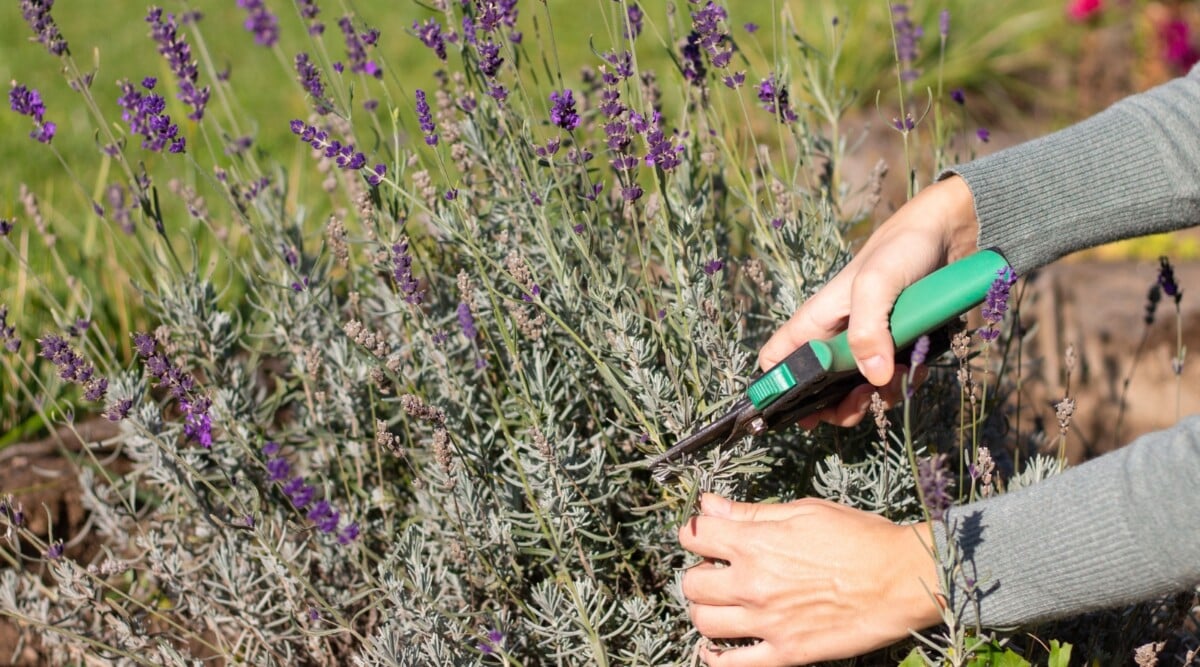
By implementing proper pruning techniques in your lavender garden, you can create a healthier environment that discourages caterpillar infestations. Stay tuned for more effective strategies to ensure the well-being of your lavender plants and the success of your garden.
The Role of Proper Plant Nutrition and Soil Health in Caterpillar Prevention
Proper plant nutrition and soil health play a crucial role in preventing caterpillar infestations on lavender plants.

- Macronutrients: Lavender plants need a balanced supply of nitrogen (N), phosphorus (P), and potassium (K). These nutrients support overall growth, flowering, and resilience.
- Micronutrients: Iron (Fe), manganese (Mn), and zinc (Zn) are essential micronutrients. They play crucial roles in enzyme function, photosynthesis, and overall plant health.
- Secondary Metabolites: Well-nourished plants produce secondary metabolites, such as essential oils and phenolic compounds. These substances act as natural repellents against pests.
- Healthy Soil: Maintain good soil health by ensuring proper drainage, organic matter supplementation, and pH balance. Healthy soil supports robust root systems, allowing efficient nutrient absorption.
By following these guidelines, gardeners can promote strong, pest-resistant lavender plants. 🌿🌼.
Maintaining a Clean and Tidy Garden: Removing Weeds and Debris
Maintaining a clean and tidy garden is crucial for the overall health and well-being of your lavender plants.
- Weed Removal: Weeds compete with lavender for nutrients and water. Regularly inspect your garden for weeds and promptly remove them, including their roots. Dispose of the weeds properly to prevent reinfestation.
- Debris Cleanup: Fallen leaves, branches, and other plant material create hiding spots for caterpillars. Regularly clear away debris to eliminate these hiding places and improve air circulation around your lavender plants.
| Maintaining a Clean and Tidy Garden | Key Practices and Considerations |
|---|---|
| 1. Regular Weeding Routine | – Frequent Inspection: Regularly inspect and remove weeds. |
| – Shallow Hoeing: Use a hoe to disturb weed seedlings shallowly. | |
| 2. Mulching for Weed Control | – Apply Mulch: Mulch around plants to suppress weed growth. |
| – Organic Mulch: Use organic materials for added benefits. | |
| 3. Debris Removal | – Remove Dead Plants: Eliminate dead or diseased plant material. |
| – Fall Cleanup: Clear fallen leaves and debris regularly. | |
| 4. Proper Disposal Practices | – Dispose Responsibly: Properly dispose of pulled weeds and debris. |
| – Composting Option: Consider composting suitable materials. | |
| 5. Weeding Tools and Gear | – Use Appropriate Tools: Choose the right tools for efficient weeding. |
| – Protective Gear: Wear gloves and appropriate clothing for safety. | |
| 6. Preventative Measures | – Soil Cover: Use cover crops to prevent weed establishment. |
| – Healthy Plants: Maintain healthy plants to outcompete weeds. |
By following these practices, you’ll create a healthier environment for your lavender and reduce the risk of caterpillar infestations. 🌿🦋.
Long-Term Strategies for Sustainable Caterpillar Management on Lavender Plants
The long-term management of caterpillar infestation on lavender plants requires a comprehensive approach aimed at preventing future outbreaks and preserving the overall health of the plants. To manage caterpillars on lavender plants effectively, implement these key strategies:
- Encourage natural predators:
- Attract beneficial insects like ladybugs, lacewings, and parasitic wasps.
- Plant nectar-rich flowers to provide food for these insects.
- Install insect houses or shelters to offer suitable habitats.
- Implement cultural practices:
- Regular pruning: Promote healthy growth and remove caterpillar hiding spots.
- Maintain plant nutrition and soil health:
- Use organic fertilizers to strengthen plants’ natural defenses.
- Conduct regular soil testing to ensure optimal soil conditions.
- Establish a resilient ecosystem:
- By fostering strong plant health and attracting natural predators, significantly reduce the risk of caterpillar infestation in the long run.
Watch video for more information:
FAQ
What are the signs of caterpillar infestation on lavender plants?
Signs of caterpillar infestation on lavender plants include chewed leaves, holes in the leaves, and the presence of caterpillar droppings, also known as frass.
How can I identify caterpillars on lavender plants?
Caterpillars on lavender plants can be identified by their elongated body, segmented appearance, and usually green or brown color. Some caterpillars may also have distinct markings or hairs.
How do caterpillars impact lavender plants?
Caterpillars can cause significant damage to lavender plants by feeding on the leaves, which can weaken the plant and affect its overall health and appearance.
Why is early detection and prompt action important in managing caterpillar infestation?
Early detection and prompt action are crucial in managing caterpillar infestation because it allows for a more effective control strategy, preventing the infestation from spreading and causing extensive damage to the lavender plants.
How can I encourage beneficial insects in my garden to control caterpillars naturally?
You can encourage beneficial insects in your garden by planting flowers that attract them, such as daisies or marigolds, providing a water source, and avoiding the use of broad-spectrum pesticides that may harm these helpful insects.
What are some physical methods to remove caterpillars from lavender plants?
Handpicking and manual removal of caterpillars is a physical method that involves physically picking off caterpillars from the lavender plant by hand or using tools like tweezers or gloves.
How can I create a protective barrier to prevent caterpillar infestation?
You can create a protective barrier around lavender plants by using netting or row covers. These barriers can prevent adult butterflies from laying eggs on the plants and thus reduce the chances of caterpillar infestation.
Are there any homemade remedies that can help control caterpillars on lavender plants?
Yes, there are homemade remedies such as garlic spray, neem oil solution, or a mixture of water and dish soap that can be used to deter caterpillars from feeding on lavender plants.
Are there organic pesticides available for caterpillar control on lavender plants?
Yes, there are safe and effective organic pesticides available, such as Bacillus thuringiensis (Bt), which specifically targets caterpillars without harming beneficial insects or the environment.
How can cultural practices help prevent caterpillar infestation on lavender plants?
Implementing cultural practices like crop rotation, proper watering techniques, and maintaining good plant health can help prevent caterpillar infestation on lavender plants by creating unfavorable conditions for their development.
Can pruning techniques minimize caterpillar damage on lavender plants?
Yes, pruning techniques such as removing infested branches or damaged foliage can help minimize caterpillar damage on lavender plants and promote healthier growth.
How does proper plant nutrition and soil health play a role in preventing caterpillar infestation?
Providing lavender plants with proper nutrition and maintaining healthy soil can enhance plant vigor and resilience, making them less susceptible to caterpillar infestation.
How does maintaining a clean and tidy garden help control caterpillar infestation?
Removing weeds and debris from the garden can eliminate hiding places and food sources for caterpillars, reducing the likelihood of infestation on lavender plants.

Studied Agricultural Engineering-Plant Protection at University of California, Davis.
Head of Content writing team at Southelmontehydroponics.com

